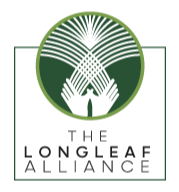Restoring Upland Habitat in Arkansas' Grand Prairie
This area, which is now better known for its extensive conversion to commercial rice production and waterfowl hunting was once 400,000 acres of prairie, grassland savannas and bayous. It is also in the Working Lands for Wildlife Northern Bobwhite Quail Framework, a priority area of private lands conservation for the United States Department of Agriculture’s Natural Resources Conservation Service (USDA-NRCS). Around one percent of the original prairie remains, but Jake Holmes is restoring upland habitat on his property while maintaining agricultural production.
Hunting and farming have long coexisted on the property. Holmes’ grandfather and father quail hunted as well as ran cattle. Holmes is a passionate turkey hunter and while he keeps much of the property in row crop production for rice, rye, soybeans, corn and wheat, he has started to convert low production areas of the property to pollinator and upland habitat.
“I want every acre to be productive for something,” Holmes says. “Whether it’s for wildlife or for farming. I also have four kids and I want to make it better for them.”
Work on the property began with timber thinning work, aimed at restoring the wooded areas of the property to a state more similar to the upland hardwood forests and grassland savannas that characterized the area before settlement.
Most recently, the low production sections that are difficult to irrigate for row crops are being enrolled for EQIP Pollinator work. The work is focused on borders, draws and hedgerows. Restoring native grasslands helps to provide the necessary brood rearing and nesting habitat that quail need to thrive. It also attracts insect life, a food source which quail and other upland birds such as wild turkeys need, especially early in their development.
Holmes’ work has already started to pay dividends. He reports seeing a resurgence of native species such as blazing star, big and little bluestem as well as compass plant. Holmes also says that they are hearing more quail now than they have in ten years. The work he’s done has also drawn in more pollinators for his crops, improved soil stabilization and reduced crop damage from wildlife due to providing additional native forage.
Brandon Grady, Pheasants and Quail Forever Farm Bill Biologist, works with Holmes on implementing conservation work and says, “Out of all my landowners Jake is unique for the work he is doing, even with production agriculture being his livelihood. He is interested in learning the different techniques of management, but also learning how the habitat would have been historically to preserve that for his kids and future generations.”
Habitat Connectivity
Holmes has not only worked to improve habitat on his own property. He has inspired neighboring landowners to convert their low production areas into wildlife habitat. Brandon Grady, a Farm Bill Biologist with Pheasants and Quail Forever who has worked with Holmes, says, “Jake has been an advocate, leading to about 4-6 landowners wanting to put in applications for wildlife work. One of those applicants is a property that connects to his and adds 60 acres of upland habitat to the landscape.”
This is further enhanced by its proximity to the nearly 20,000 acre Wattensaw Wildlife Management Area, which provides habitat for upland birds.
“Because of agricultural advances, many farmers converted their fence/hedgerows to row crops,” says Grady. “Connecting pieces of private land habitat restores that chain of habitat that allows wildlife to thrive beyond the borders of individual properties. Furthermore, connecting the private land habitat to public pieces of habitat maximizes the positive impact for wildlife.”
The Holmes property and properties like it are at the forefront of quail restoration efforts. With almost ninety percent of land in Arkansas being privately held, it’s hard to overstate the value of the work being made possible by conservation minded farmers and ranchers. Whether it’s developing a burn plan, help applying for an EQIP contract or obtaining financial assistance, there are numerous resources available for landowners to accomplish their conservation goals.
To learn more about conservation programs available to landowners through Working Lands for Wildlife, get in touch with a local NRCS office or a Quail Forever representative.


























